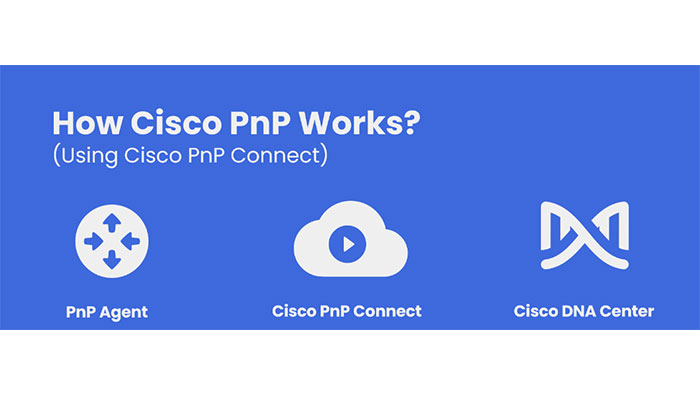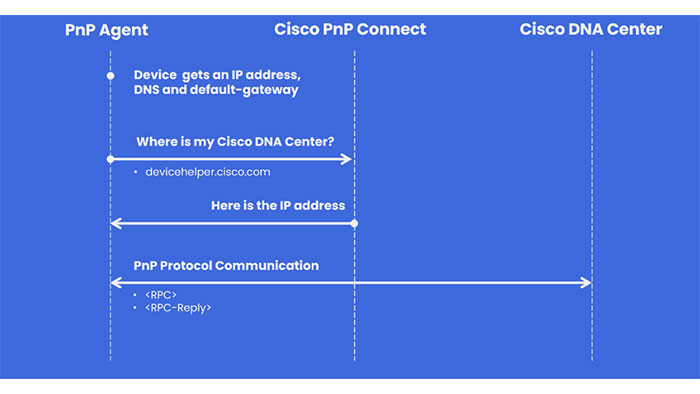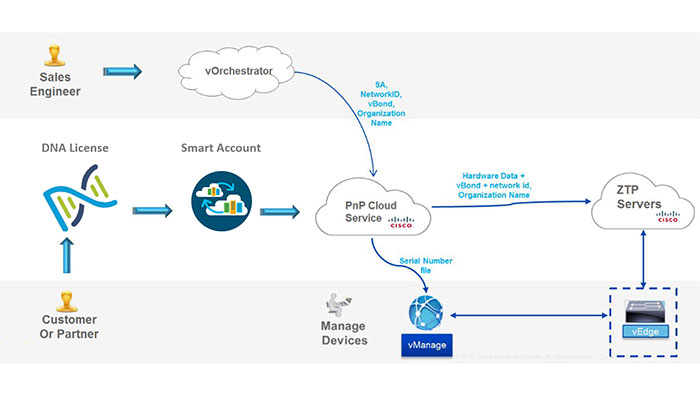Cisco Plug and Play
Cisco Plug and Play (PnP) allows for highly secure, scalable, seamless, and unified zero-touch provisioning of network devices. This allows you to simply unbox a brand new switch plug it in and power it on. Cisco DNA Center will provision the configuration of the switch as well as update firmware for you automatically. You no longer need to pre-stage equipment by manually copying and pasting config or uploading the correct firmware before you rack and stack. This can save you a lot of time as well as make your job a whole lot easier while incurring major operating costs.
The Cisco Plug and Play (PnP) deployment includes a PnP agent, a PnP server, and other components. The Cisco Plug and Play (PnP) agent is an embedded software component that is present in all Cisco network devices that support simplified deployment architecture. After the configuring the uplink switch ports, by default, the new switch will attempt to connect to the PnP server on VLAN 1 to communicate with DNA Center. For this mater, first, the new switch will need to know how to locate the DNA Center server. It can use DNA with an A record pointing to PnP server, your domain DHCP option 43 or even the cloud to find the IP address of DNA Center.
New Cisco devices are shipped to customers with no startup configuration file in the NVRAM of the devices are starting auto install plug and play zero touch provisioning.
Plug and Play licenses are also essential for Cisco SDWAN solution. Customers should add their PnP licenses on the Cisco vManage in order to provision their vEdge devices in their SDWAN environment.
Note: It is important that we do not enter anything at the initial configuration prompt because that will halt the PnP process.
Note: if you would like to run PnP on an existing switch or one that has already been configured, you have to perform some device cleanup. You would have to remove the PnP profile, any certificates on the switch, VLANs and the startup config. Also, you need your DNA Center fully configured.
Cisco SD WAN Plug and Play License
Customers should use the Cisco Plug-and-Play (PnP) portal to assign a DNA license, which assigns allowed crypto bandwidth for each controller, to every vEdge device within their SD WAN network.
After that, customers would be able to export a Viptela license from Cisco PnP platform which can be uploaded to vManage manually or would be associated to the vBond controller that was pushed by Cisco SD-WAN CloudOps automatically. Once the association is successful, the data is pushed to zero-touch provisioning (ZTP). You can find the SD WAN licensing workflow in below figure:
Please be noted, customers should define the vBond controller, which can be recognized using a public IP, in Plug and Play.




